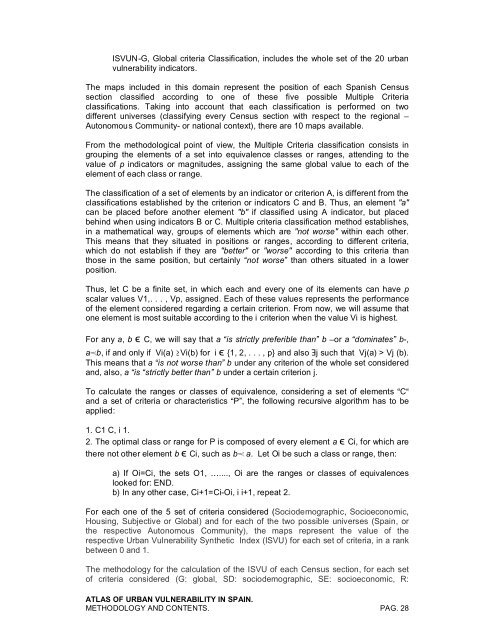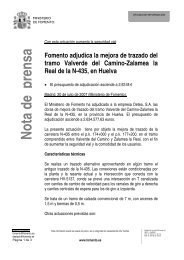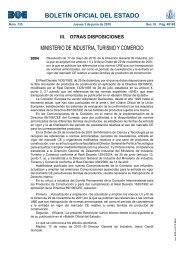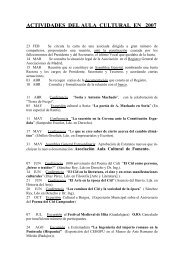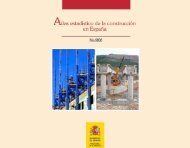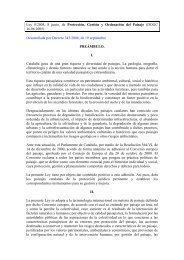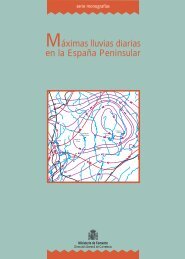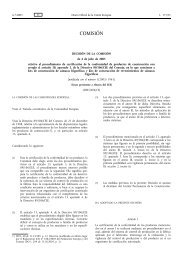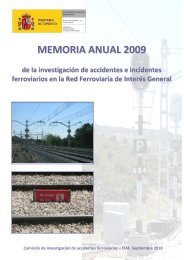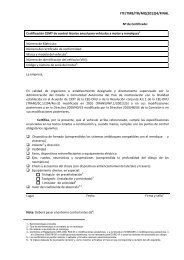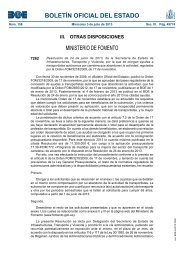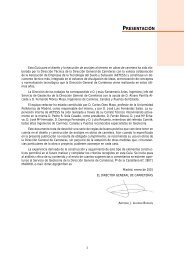atlas of urban vulnerability in spain: methodology and contents
atlas of urban vulnerability in spain: methodology and contents
atlas of urban vulnerability in spain: methodology and contents
Create successful ePaper yourself
Turn your PDF publications into a flip-book with our unique Google optimized e-Paper software.
ISVUN-G, Global criteria Classification, <strong>in</strong>cludes the whole set <strong>of</strong> the 20 <strong>urban</strong><br />
<strong>vulnerability</strong> <strong>in</strong>dicators.<br />
The maps <strong>in</strong>cluded <strong>in</strong> this doma<strong>in</strong> represent the position <strong>of</strong> each Spanish Census<br />
section classified accord<strong>in</strong>g to one <strong>of</strong> these five possible Multiple Criteria<br />
classifications. Tak<strong>in</strong>g <strong>in</strong>to account that each classification is performed on two<br />
different universes (classify<strong>in</strong>g every Census section with respect to the regional <br />
Autonomous Community- or national context), there are 10 maps available.<br />
From the methodological po<strong>in</strong>t <strong>of</strong> view, the Multiple Criteria classification consists <strong>in</strong><br />
group<strong>in</strong>g the elements <strong>of</strong> a set <strong>in</strong>to equivalence classes or ranges, attend<strong>in</strong>g to the<br />
value <strong>of</strong> p <strong>in</strong>dicators or magnitudes, assign<strong>in</strong>g the same global value to each <strong>of</strong> the<br />
element <strong>of</strong> each class or range.<br />
The classification <strong>of</strong> a set <strong>of</strong> elements by an <strong>in</strong>dicator or criterion A, is different from the<br />
classifications established by the criterion or <strong>in</strong>dicators C <strong>and</strong> B. Thus, an element "a"<br />
can be placed before another element "b" if classified us<strong>in</strong>g A <strong>in</strong>dicator, but placed<br />
beh<strong>in</strong>d when us<strong>in</strong>g <strong>in</strong>dicators B or C. Multiple criteria classification method establishes,<br />
<strong>in</strong> a mathematical way, groups <strong>of</strong> elements which are "not worse" with<strong>in</strong> each other.<br />
This means that they situated <strong>in</strong> positions or ranges, accord<strong>in</strong>g to different criteria,<br />
which do not establish if they are "better" or "worse" accord<strong>in</strong>g to this criteria than<br />
those <strong>in</strong> the same position, but certa<strong>in</strong>ly not worse than others situated <strong>in</strong> a lower<br />
position.<br />
Thus, let C be a f<strong>in</strong>ite set, <strong>in</strong> which each <strong>and</strong> every one <strong>of</strong> its elements can have p<br />
scalar values V1,. . . , Vp, assigned. Each <strong>of</strong> these values represents the performance<br />
<strong>of</strong> the element considered regard<strong>in</strong>g a certa<strong>in</strong> criterion. From now, we will assume that<br />
one element is most suitable accord<strong>in</strong>g to the i criterion when the value Vi is highest.<br />
For any a, b ϵ C, we will say that a is strictly preferible than b or a dom<strong>in</strong>ates b-,<br />
a b, if <strong>and</strong> only if Vi(a) Vi(b) for i ϵ {1, 2, . . . , p} <strong>and</strong> also Ǝj such that Vj(a) > Vj (b).<br />
This means that a is not worse than b under any criterion <strong>of</strong> the whole set considered<br />
<strong>and</strong>, also, a is strictly better than b under a certa<strong>in</strong> criterion j.<br />
To calculate the ranges or classes <strong>of</strong> equivalence, consider<strong>in</strong>g a set <strong>of</strong> elements C<br />
<strong>and</strong> a set <strong>of</strong> criteria or characteristics P, the follow<strong>in</strong>g recursive algorithm has to be<br />
applied:<br />
1. C1 C, i 1.<br />
2. The optimal class or range for P is composed <strong>of</strong> every element a ϵ Ci, for which are<br />
there not other element b ϵ Ci, such as b a. Let Oi be such a class or range, then:<br />
a) If Oi=Ci, the sets O1, ...., Oi are the ranges or classes <strong>of</strong> equivalences<br />
looked for: END.<br />
b) In any other case, Ci+1=Ci-Oi, i i+1, repeat 2.<br />
For each one <strong>of</strong> the 5 set <strong>of</strong> criteria considered (Sociodemographic, Socioeconomic,<br />
Hous<strong>in</strong>g, Subjective or Global) <strong>and</strong> for each <strong>of</strong> the two possible universes (Spa<strong>in</strong>, or<br />
the respective Autonomous Community), the maps represent the value <strong>of</strong> the<br />
respective Urban Vulnerability Synthetic Index (ISVU) for each set <strong>of</strong> criteria, <strong>in</strong> a rank<br />
between 0 <strong>and</strong> 1.<br />
The <strong>methodology</strong> for the calculation <strong>of</strong> the ISVU <strong>of</strong> each Census section, for each set<br />
<strong>of</strong> criteria considered (G: global, SD: sociodemographic, SE: socioeconomic, R:<br />
ATLAS OF URBAN VULNERABILITY IN SPAIN.<br />
METHODOLOGY AND CONTENTS. PAG. 28


